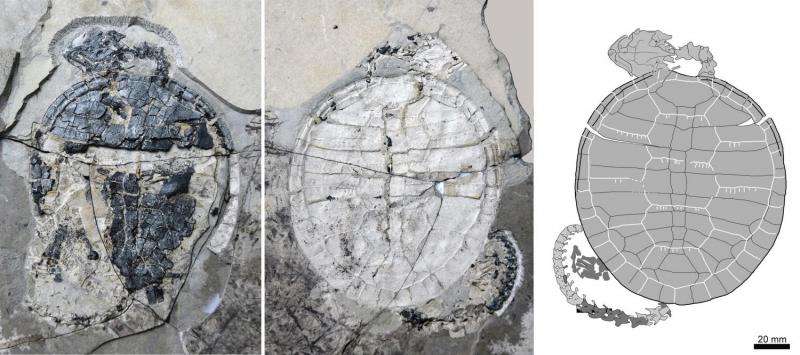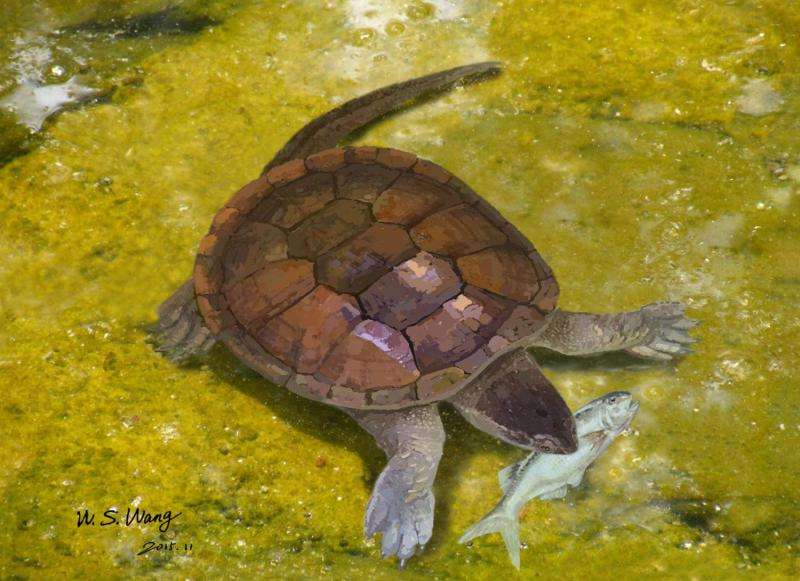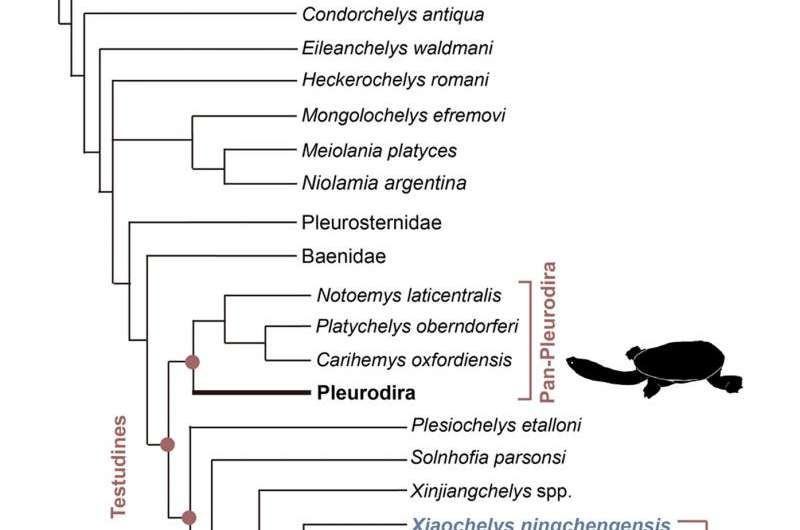New insights into the family tree of modern turtles

Today's sea turtles are the sole survivors of a once diverse ecosystem of marine reptiles from the age of dinosaurs. Sea turtles first appeared during the Cretaceous period, 130-140 million years ago and likely evolved from freshwater ancestors. However, these ancestors have yet to be discovered. In a new study, Dr. Chang-Fu Zhou of the Shenyang Normal University of Liaoning and Dr. Márton Rabi of the Biogeology Workgroup of the University of Tübingen and the Hungarian Academy of Sciences seek to identify the ancestors of modern sea turtles among fossils of the Jehol Biota in northeastern China. Their findings were published in Scientific Reports this November.
The Jehol Biota is a rich Cretaceous ecosystem preserved in a multi-layered rock formation cropping out in the Chinese provinces of Liaoning, Hebei and Inner Mongolia. A vast number and variety of organisms became fossilized there about 125 million years ago. The region is famous for its feathered dinosaur fossils which demonstrate that today's birds descended from dinosaurs. However, the first vertebrate of the Jehol Biota to be described in 1942 was one of the many turtles found there.
Zhou and Rabi described a new species of Jehol turtle, Xiaochelys ningchengensis, and investigated its possible relationship with today's chelonians. They applied comparative morphological techniques, looking at the creatures' structure and shape as well as using genetic data of living species, compiling a comprehensive family tree of fossil and extant turtles.
The researchers wanted to test an earlier hypothesis that the Jehol turtles belong to a lineage that eventually gave rise to today's sea turtles. "According to our findings, the Jehol turtles are instead found on the lineage leading to the cryptodiran turtles," says Zhou. The cryptodires – which also include sea turtles – are able to pull their heads and necks vertically into their shells using an S-shaped motion. "However, a placement of the Jehol turtles close to sea turtles on the family tree is only slightly less supported statistically" adds Rabi. Therefore, the researchers say, the earliest known sea turtles are likely to have looked much like the species found in the Jehol Biota.

"These well-preserved fossils give us insights into the origin of cryptodires. About three-quarters of today's turtles belong to that group," says Zhou. It remains unclear, however, just how the main adaptations of sea turtles arose for a marine habitat. These evolutionary changes included the reduction of their skeleton and the development of large and rigid paddles which enable the creatures to swim in a style which is best described as underwater flight. "The origin of sea turtles was a major morphological transition in vertebrate evolution but we still don't really understand how it happened. It was a highly successful adaptation and it is truly depressing to see that the last surviving marine reptiles are threatened with extinction after more than 130 million years," says Rabi.

More information: Chang-Fu Zhou et al. A sinemydid turtle from the Jehol Biota provides insights into the basal divergence of crown turtles, Scientific Reports (2015). DOI: 10.1038/srep16299
Journal information: Scientific Reports
Provided by Universitaet Tübingen




















